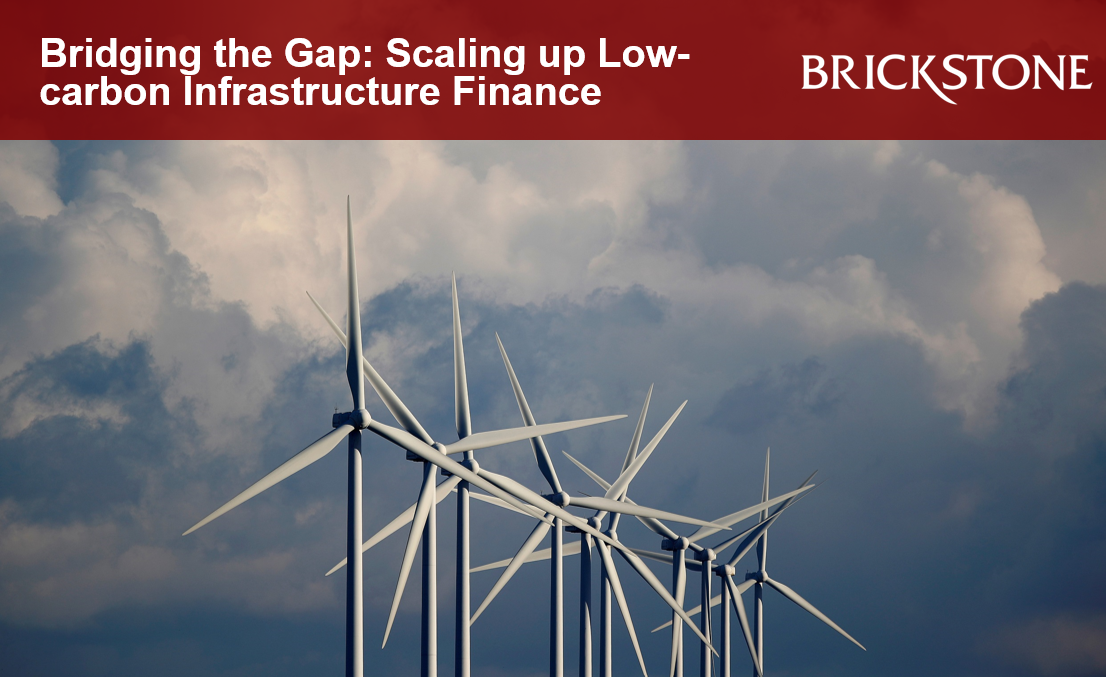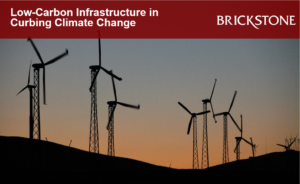Bridging the Gap: Scaling up Low-carbon Infrastructure Finance
The need for low-carbon infrastructure is heightened as a result of the alarming greenhouse gas emissions produced globally from the world’s core infrastructure, exposing the world to planetary and environmental changes and insecurities.
According to the UN, approximately 79% of global greenhouse gas emissions come from infrastructure construction and operations such as power plants, buildings, and transport. And without a unified planning and action to tackle emissions from infrastructure, over 720 million people could be pushed back into extreme poverty by 2050 as a result of climate impacts. Additionally, the number of deaths attributable to the harmful effects of emissions from key infrastructure industries will rise from the current 150,000 per year to 250,000 by 2030.
To improve healthier lifestyles of people everywhere, and offer tremendous economic opportunities, it is critical that we invest in sustainable infrastructure – low-carbon infrastructure – that adapts to future uncertain climate conditions; contributes to the decarbonization of the economy; protects biodiversity and minimizes pollution.
This transition however, comes with its cost as research estimates show that low-carbon and climate-resilient infrastructure in low- and middle-income countries could require investments of around $1.6 trillion annually from now to 2030, or 4.5% of their GDP.
This article by Brickstone reviews some institutional reports and publications on Low-carbon Infrastructure, highlighting strategies on how to scale up finance to bridge the demand and financing gap.
Low-carbon Infrastructure in Curbing Climate Change
The UN estimates that the world will need to increase its efforts between three- and five-fold in order to restrict climate change to a maximum temperature rise of 1.5°C relative to pre-industrial times and avoid escalating the climate-related damage already taking place around the world.
To win this race we need to reduce net carbon emissions to zero by mid-century, in an effort to keep average global warming well below 2˚C, as per the 2015 Paris Agreement stipulating that a “balance” between anthropogenic sources and sinks of greenhouse gasses must be reached by 2050-2100. Governments, businesses and civilians around the world need to rise to the challenge, requiring an unprecedented transformation of the global infrastructure system as a result of its high remit.
According to Brookings, the world’s core infrastructure – including our transport and energy systems, buildings, industry, and land-related activities – produce more than 60 percent of all greenhouse gas (GHG) emissions globally. At the same time, the world has significant infrastructure needs. From 2015-2030, approximately $90 trillion of infrastructure investment is needed, a doubling of the global capital stock.
Yet, unless the new infrastructure is low-carbon and climate resilient (LCR), the world will be locked into a high-carbon pathway and will miss the Paris Agreement’s goal of keeping the global average temperature increase well below 2 degrees Celsius by 2050. LCR infrastructure includes renewable energy, mass transit, and energy efficiency.
Making the investment case for low-carbon infrastructure will be essential – failing to advocate for change will mean that the 2050 net-zero target will be missed and the chance to create meaningful reduction in climate change will be lost.
Meeting LCR infrastructure needs will require an additional $13.5 trillion in renewable energy and energy efficiency. Moreover, infrastructure investment consistent with the below 2 degree scenario will also require a reallocation of investment, with less investment in carbon intensive infrastructure and less infrastructure needed due to more compact cities. In fact, the net increase in needed LCR infrastructure is around $4 trillion over 15 years.
And this does not take into account savings from lower operating costs of LCR infrastructure, estimated at around $5 trillion. These figures underscore the broader point that there is no inherent trade-off between building LCR infrastructure and development.
Scaling up Low-carbon Infrastructure Finance
A key challenge is financing the needed low-carbon infrastructure infrastructure. And because public finances are constrained, 35-50 percent of incremental infrastructure investment will need to come from the private sector – working through the financial markets.
Delivering this systemic change requires the deployment of private financial flows in pursuit of clean, resilient and environmentally sustainable economic growth. While infrastructure development is ultimately funded by taxpayers or users, it may be financed by public authorities (national and/or subnational governments, development banks, or other public financial institutions) and/or the private sector (corporate or project finance).
Investment in low-carbon infrastructure occurs through both equity and debt channels. Private-sector investors are generally incentivised by a combination of financial return and increasing social and policy pressure. Investors range from institutional investors such as pension funds and insurance companies to corporates to lenders such as commercial banks and national development banks.
Yet, there is a shortage of private capital for infrastructure, particularly LCR infrastructure in developing countries due to infrastructure risks and other barriers. Addressing these challenges requires aligning public and private finance in a manner that allows the full risks to be borne.
Read more on scaling up low-carbon infrastructure here.







